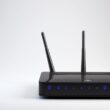Wi-Fi is an integral part of our daily lives, and when your Wi-Fi card is not detected on your Windows computer, it can be a frustrating experience. Whether you’re using Windows 7, Windows 10, Windows 11, or any other Windows version, the good news is that this issue is not insurmountable. In this detailed guide, we’ll explore common reasons behind a Wi-Fi card not being detected and provide a step-by-step solution to get it back up and running.
Why Does My Wi-Fi Card Stop Being Detected?
Before diving into the solutions, it’s crucial to understand why your Wi-Fi card may stop being detected in the first place. Several factors can contribute to this issue, including hardware problems, driver conflicts, or system errors. Let’s break down each of these potential causes.
Common Reasons for Wi-Fi Card Not Being Detected
Hardware Issues
- Loose Connections: The physical connection between your Wi-Fi card and the motherboard may have become loose, causing it to go undetected.
- Damaged Card: Over time, Wi-Fi cards can wear out or become damaged, leading to detection issues.
Driver Conflicts
- Outdated Drivers: If your Wi-Fi card drivers are outdated or incompatible with your operating system, they may not function correctly.
- Multiple Drivers: Having multiple conflicting drivers for your Wi-Fi card can create problems.
System Errors
- Windows Updates: Sometimes, Windows updates can disrupt the functionality of your Wi-Fi card.
- Software Conflicts: Conflicting software or security programs can interfere with your Wi-Fi card’s operation.
- BIOS/UEFI Settings: The Wi-Fi card may be disabled or not properly configured in the BIOS or UEFI settings.
- Disabled Wi-Fi: Sometimes, the Wi-Fi card is disabled in Windows settings, the device manager, or through a physical switch (common in laptops).
Solutions to Fix Wi-Fi Card Not Detected
1. Check Physical Connections
The first step is to ensure the Wi-Fi card is properly connected. This is crucial for desktop users with PCI or PCIe Wi-Fi cards. Turn off your computer, open the case, and firmly reseat the Wi-Fi card in its slot. For laptop users, it’s essential to ensure the internal connections are intact.
2. Update or Reinstall Wi-Fi Card Drivers
Outdated or corrupted drivers can often be the root cause. To update or reinstall drivers:
- For Windows 7: Right-click on “Computer,” select “Manage,” go to “Device Manager,” find your Wi-Fi card under “Network Adapters,” right-click, and select “Update Driver Software.”
- For Windows 10/11: Press Win + X, choose “Device Manager,” locate your Wi-Fi card, right-click, and select “Update Driver.” Opt for online driver search if available.
3. Enable the Wi-Fi Card
In Windows, open the “Device Manager” and look for your Wi-Fi card. If it’s disabled, right-click and choose “Enable.” For laptops, make sure the physical Wi-Fi switch or function key (e.g., F2, F3) is in the “On” position.
4. Check BIOS/UEFI Settings
Reboot your computer and access the BIOS or UEFI settings during startup (typically by pressing a key like F2, F12, or Del). Navigate to the “Advanced” or “Peripherals” section, and ensure that the “Wireless Adapter” or “Wi-Fi” is enabled.
5. Test with Another Device
If you’ve tried all the above solutions and the Wi-Fi card is still not detected, consider testing it on another computer. This will help determine if the issue is with the hardware itself.
6. Seek Professional Help
If all else fails, contact the manufacturer’s support or consult a professional technician. They may provide additional troubleshooting steps or recommend a replacement if the Wi-Fi card is indeed malfunctioning.
Wrapping Up – Fixing Wi-Fi card not detected in Windows
A Wi-Fi card not being detected in Windows can be frustrating, but it’s a problem that can usually be resolved with some troubleshooting. Whether you’re using Windows 7, Windows 10, Windows 11, or any other Windows version, following the steps in this guide can help you regain your Wi-Fi connectivity and stay connected without interruption. Remember that persistence and patience can often lead to a successful resolution of this issue.



